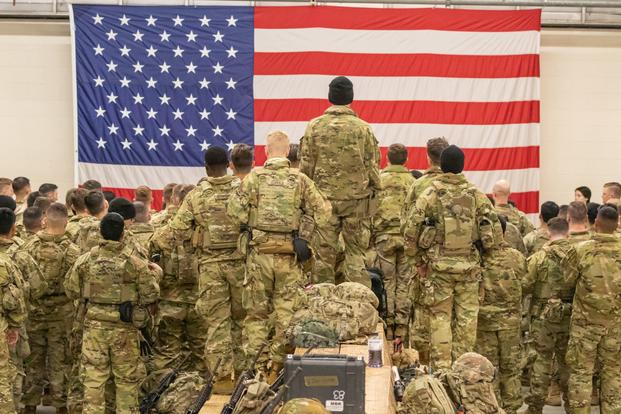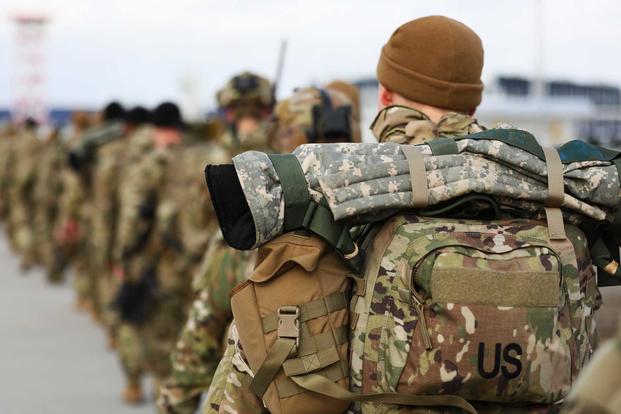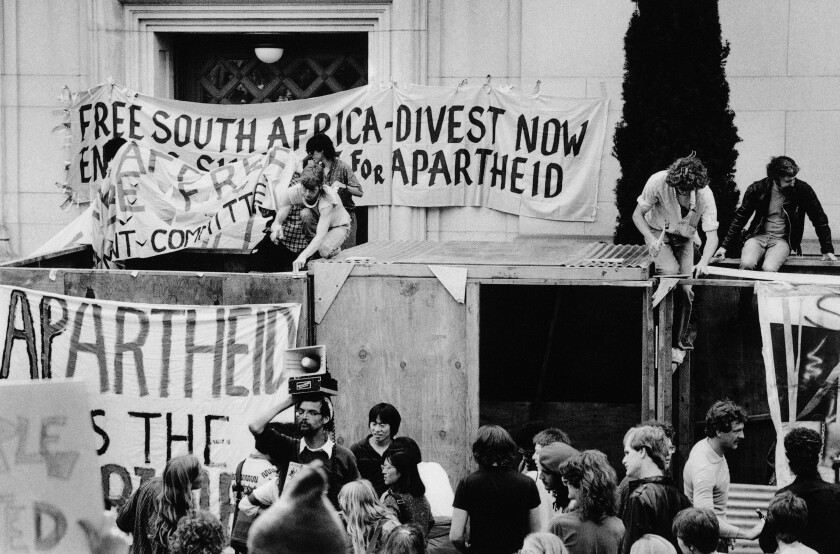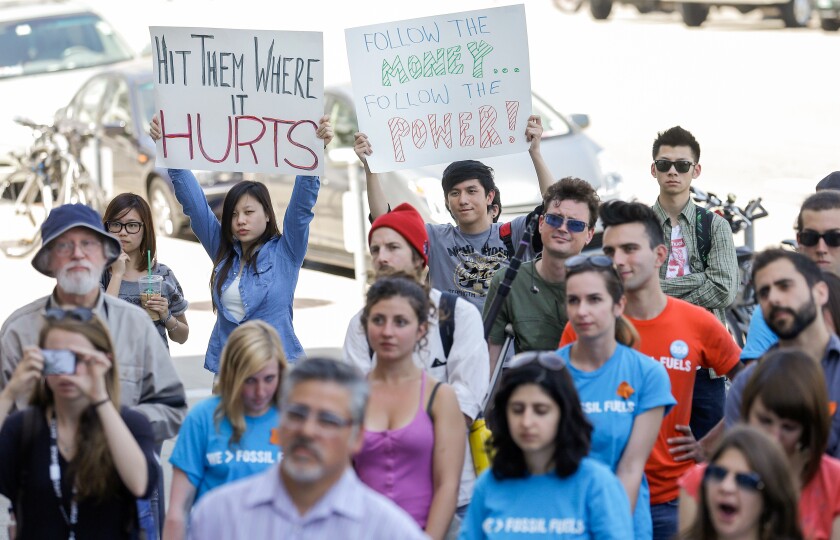'Hysteric Fit': Western Media's Russian 'Invasion' Claims Coordinated by Washington - Zakharova

"We outlined our considerations and stressed several times that we do not understand why it is necessary to transmit deliberately false information about Russian intentions to the media," the Kremlin aide said.
"This is how we see this situation," he said.
TEHRAN (FNA)- The information campaign surrounding Russia's imminent "invasion" of Ukraine is coordinated from Washington, Russian Foreign Ministry Spokeswoman Maria Zakharova noted on Saturday.
"The media coverage, I would say, is unprecedented, because all Western resources that position themselves as independent have shown their true face by exclusively serving this custom-made story from Washington," Zakharova told the Soloviev Live YouTube show, adding that the West is attempting to incite a breaking point, RIA Novosti reported.
Zakharova remarked during her Saturday interview that the continued unsubstantiated claims of a looming "invasion" should be handled "exactly as a hysteric fit", particularly as the US has been hankering for a conflict in the region for years.
"We should treat it exactly as a hysteric fit. The purpose of this hysteria is to escalate the situation and, of course, to create a provocation," the spokesperson said, adding, "This is part of an internationally reaching provocation."
The provocation did not start two months ago, as the ground was prepared long ago - since the start of the Ukrainian conflict, which is "actively run by the United States", she underscored.
Withdrawal of Western military instructors from Ukraine evidences that they performed a mission there that had been completed, Zakharova said.
"Ukraine is the country where Western instructors, Western representatives of armed forces of NATO countries acted all along but their numbers increased by many times over the last two months, meaning that they were doing something there," Zakharova said.
"We were told these so-called instructors were to help Ukraine with self-defense in case of aggression. No aggression - they were there; no aggression - but they are already pulled out from there. It evidences their mission was completed there, they did something there," she noted.
The scenario planned by the West probably does not anticipate presence of military instructors in Ukraine, Zakharova added.
The United States was removing about 150 of its troops present in Ukraine to help train local armed forces, Reuters reported on Sunday.
Western countries do not need a reason to impose sanctions on Russia, Zakharova said.
"The conclusion is obvious: the West has no need for any reality to introduce sanctions; only information and political coverage is needed. Its large-scale nature we see now, the threat of sanctions," the spokeswoman said.
Russia has already been living for a decade "in the phase of active sanctions, while there were indirect sanctions before, concealed as lists, threats of stop lists and pinpoint sequestration", Zakharova added.
Zakharova's remarks came as Kremlin aide Yury Ushakov offered details on a Saturday phone call between Russian President Vladimir Putin and US President Joe Biden following the latest spike in tensions between the two nations.
Ushakov relayed to the public that the more than hourlong call saw Russian officials repeatedly call out the false invasion reports that are being "deliberately" given to the US media, as well as a clear failure by the West to implement the Minsk agreements.
"We outlined our considerations and stressed several times that we do not understand why it is necessary to transmit deliberately false information about Russian intentions to the media," the Kremlin aide said.
In line with Zakharova's comments, Ushakov similarly referred to persistent invasion allegations as "artificially inflating hysteria" put out by the US, stressing that "allegations of an invasion create a pretext for possible provocations by the Ukrainian armed forces."
"This is how we see this situation," he said.
The Saturday call also saw Putin discuss with Biden the supply of weapons to Ukraine, which might encourage potential provocations by Ukrainian armed forces in Donbas and Crimea, Ushakov noted.
Earlier, a White House readout detailed that Biden had warned his Russian counterpart of "swift and severe costs on Russia" if Russian troops move into Ukrainian territory. The Biden administration has not clarified the "costs" it may inflict on Russia.
Tensions between the US and Russia were kicked up a notch after PBS reporter Nick Schifrin tweeted on Friday that "three Western and defense officials" had informed him that Putin had "communicated" a decision to launch an all-out invasion against Ukraine to military chiefs.
Moments later, however, during a White House briefing, National Security Adviser Jake Sullivan informed reporters that the US had no evidence to that effect. The US official explained that the PBS reporter's finding "does not accurately capture what the US government's view is today".
US officials have yet to provide any solid evidence to back claims of a looming invasion, with State Department Spokesperson Ned Price earlier getting into a heated exchange with AP reporter Matt Lee when he was challenged on the assertions.
As several US allies have begun evacuating their respective embassies in Ukraine, including Australia, Russian authorities announced on Saturday that it too would reduce its staff at its diplomatic mission in Ukraine over concerns of provocations by the US and its partners.

Ukrainian servicemen launch a missile while testing the U.S. Javelin anti-tank
missile system at a shooting range in Ukraine. (File photo, Turchynov.com)
Ukraine: Blind Man’s Bluff Posing As Brinkmanship – OpEd
By Alex Holstein*
War is imminent. Despite a White House about-face to the contrary, that seems to be the prevailing battle-station consensus among many beltway politicians, television pundits and world leaders alike, as they insist on an aggressive U.S. response to the deepening crisis on the Russian-Ukrainian border. Secretary of State Anthony Blinken has denied any “alarmism” at play, but the hue and cry is reminiscent of the much more divisive lead-up to the disastrous Iraq War, which destabilized the very region it sought to “democratize.” As the U.S. embroiled itself in conflicts across the Middle East, Central Asia, and Africa, Russian President Vladimir Putin spent much of that same period quietly transforming Russia into the first secret police state in history actually run by the secret police. He did this by leveraging his own background in the security services to consolidate his power, stacking the Kremlin deck with all his KGB aces. It is this cadre, known as the siloviki, “the persons of force,” all veterans of Russia’s security establishment, that has kept Putin comfortably shacked up in the Kremlin for the past twenty years. This cadre that helped him rebuild the Russian military into the formidable fighting force threatening Ukraine today, as the former Soviet republic pursues NATO membership, turning it into a nuclear powder keg whose fuse is already lit.
The 2014 annexation of Crimea proved Russia’s resolve to reassert its traditional sphere of influence in the face of NATO expansion. NATO’s so-called “Line of Defense” is a geopolitical point of offense for Moscow. President Biden has just deployed 3,000 troops, including the crack 82nd Airborne, into Eastern Europe, reaffirming what the president called America’s “sacred obligation” to NATO’s Article 5—that an attack on one member is an attack on all. But Ukraine is not a NATO member. So why should the United States risk nuclear war with Russia to protect it?
In the classic thriller The Hunt for Red October, actor Scott Glenn, playing a hard-nosed American sub skipper, notes, “The hard part about playing chicken is knowing when to flinch.” So when should Washington flinch on its current collision course with the Kremlin? This is a very delicate game of brinksmanship, one in which the stakes could not be higher between the two most nuked-up nations in the world, but which U.S. decision-makers seem to be playing according to the rules of blind man’s bluff. The U.S. never came close to risking war over Hungary in 1956 or Prague in 1968. For good reason: it was not in our national interest to do so. Only when the Soviets deployed missiles to Cuba, ninety miles from our coastline, did Washington rightfully kickup a potential DEFCON-1 fuss.
Despite the hysteria over the 125,000 troops that Russia has amassed along the Ukrainian border, that number is nowhere near enough to take the entire country, let alone Eastern Europe. Biden’s recent “gaffe” that any Russian military operation might take the form of a “minor incursion” is probably his smartest statement on the matter. Most likely, if Putin does invade, he will move to pacify the Donbas, where his troops would be mostly welcome with open arms, as they were in Crimea back in 2014. This could play to Washington’s favor, driving the rest of Ukraine further into the Western fold, as happened in the wake of Crimea’s annexation. If an invisible Iron Curtain were to descend across Ukraine, splitting the country along pro-Western and pro-Russian lines, this could provide the perfect jumping off point for aggressive covert operations against Moscow, something along the lines of Operation Cyclone, the CIA-led program to arm the mujahideen during the Soviet war in Afghanistan, allowing NATO to forward project on the clandestine sly while working on the surface to ease diplomatic tensions.
The jingoists banging their war-drums in Washington would be appalled at such a suggestion; but their moral histrionics and oversimplified view of Russia, and Putin in particular, act as what poker players call a “tell”—like someone twisting their ring whenever they bluff—revealing them to be out of their depth. As they were on Iraq. And Libya. And Afghanistan. Except here the stakes are much higher; and once again, it won’t be their children who fight this war. It will be the children of the same working-class Americans they sneer at—those who inhabit “flyover country.” It will be the youngest and poorest Americans who gear up in NBC suits to fight through a radioactive murk. Unless cooler heads prevail over the beltway bluster. Even Ukraine’s leaders are begging off. In a press conference following a recent call with Biden, Ukrainian President Zelensky said he disagreed with U.S. intelligence estimates that war is imminent. Zelensky is reportedly the one who advised Biden to tone down the rhetoric. “We don’t need this panic,” he said.
No, Mr. President, we certainly do not.
*Alex Holstein is the co-author of Warfighter: The Story of an American Fighting Man, due out May15, 2022, from Lyons Press. He holds an MSc in Russian and Post-Soviet Studies from the London School of Economics, where he wrote his thesis on the Soviet KGB.
Retired Russian generals criticize Putin over Ukraine, renew call for his resignation
13 February, 2022
The chairman of the All-Russian Officers’ Assembly, retired General-Colonel Leonid Ivashov, published an appeal on his organization’s website on Jan. 31 to “the President and Citizens of the Russian Federation.”
The sharply worded missive, issued on behalf of the organization, ends with the words: “We, Russia’s officers, demand that the President of the Russian Federation reject the criminal policy of provoking a war in which Russia would be alone against the united forces of the West… and retire.”
Ivashov, 78, was a leading military hardliner in the 1990s. He was one of the instigators of the famous standoff at Pristina Airport in 1999, when Russian troops sought to block the entry of NATO peacekeepers into Kosovo.
Read also: How Ukrainians living on the border with Russia view the threat of Russian invasion – NV exclusive
In 2001, newly appointed Russian President Vladimir Putin, consolidating his power, retired this top general at the early age of 57.
Ivashov has stayed politically active as an extreme, anti-democratic nationalist leader. In 2003, he founded his All-Russian Officers’ Assembly with a limited number of like-minded extremists. Their ideology is a mixture of Soviet nostalgia, religious orthodoxy, and patriotic conservatism with support from some communist leaders.
From the outset, they demanded the ouster of Putin as corrupt and incompetent. They have also acted as a trade union for Russian officers. For example, in 2018, they urged the Russian government to acknowledge it sent private military contractors to Syria, so that the fighters and their families could receive financial and medical benefits, as do members of the Russian military. Assembly leaders have repeatedly condemned Putin and demanded his resignation.
This new appeal is important for two reasons.
First, at a time when any serious opposition web posting is being taken down within 24 hours by the Russian censor Roskomnadzor, this appeal has been up and freely accessible in Russian, including outside the country, for at least nine days.
Moreover, it has been reposted on other websites, notably the liberal Ekho Moskvy, which also published a 36-minute video interview with Ivashov on Feb. 8, in which he calmly and lucidly explained his position. It has been viewed almost 1 million times. This suggests Ivashov’s appeal is for real and that he enjoys such substantial political support that Roskomnadzor may feel it can’t take it down.
Read also:

Timothy Ash
What Putin won and what he lost escalating on Ukrainian borders
Second, Ivashov and his society are known as the most hardline Russian military figures, considered to have good relations with the Russian military intelligence agency, known by its Russian acronym GRU, which the U.S. government has implicated in attacks on the West such as the interference in the 2016 U.S. election and the 2018 poisoning in the U.K. of Russian intelligence defector Sergei Skripal.
Traditionally, Putin has been comparatively soft on hardline nationalists, but in 2021, a longstanding annual nationalist march in Moscow’s Pushkin Square was prohibited.
Therefore, General-Colonel Ivashov appears to be the last man standing, and his harsh attack on Putin’s Ukraine policy appears authentic and deserves great attention. The most reliable Russian and Western media have been cautious or not reported the development at all, perhaps unable to figure out that it is for real or speculating that Ivashov’s hardline bent makes him a less-than-credible critic of Putin.
This appeal amounts to a full-fledged attack on Putin’s policy.
Its starting point is that Russia’s degradation during Putin’s reign has been internal and systemic, ranging from the model of the state to the quality of the rule and the society. External threats exist, but they are not crucial or directly threatening the Russian state.
On the contrary, strategic stability persists; nuclear arms are under reliable control; NATO forces are not growing and do not pursue any threatening activity, goes the argument in Ivashov’s statement.
Therefore, the rationale for the military escalation around Ukraine is artificial and self-serving only for Putin rather than serving a greater good for Russia. As a consequence of the collapse of the Soviet Union, Ukraine became an independent state, a member of the United Nations, entitled to individual and collective defense, in accordance with Article 51 of the United Nations Charter, Ivashov continues.
But the retired General also complains that the leadership of the Russian Federation so far has not recognized the results of the referendums of independence of the Donetsk and Luhansk People’s Republics, the self-proclaimed breakaway entities in Ukraine’s east. Yet, Ivashov criticizes Russia’s capture of Crimea, with its important Black Sea port at Sevastopol.
He writes: “The acquisition of Crimea and Sevastopol by Russia and their non-recognition as Russian by the international community (and, therefore, the overwhelming number of states in the world still consider them to belong to Ukraine) convincingly shows the failure of Russian foreign policy, and the unattractiveness of its domestic [policy].”
Ivashov’s main criticism is focused on the threat to Ukraine. He argues that the attempts to force people to “love” Russia and its leaders through ultimatums and threat are senseless and very dangerous. To use military force against Ukraine puts the very existence of Russia as a state in question.
It will make Russians and Ukrainians mortal enemies forever. It will cost both sides tens of thousands of deaths, he argues. NATO members might be forced to declare war on Russia after they have suffered various losses.
Read also:
 Kremlin should not expect a blitzkrieg or quick win if it invades Ukraine, says Polish expert
Kremlin should not expect a blitzkrieg or quick win if it invades Ukraine, says Polish expert
A peculiar final point that Ivashov makes is that Turkish President Recep Tayyip Erdoğan appears to have placed Turkey, a member of NATO across the Black Sea from Ukraine and Russia, firmly on the side of Ukraine in the current standoff. Erdogan has criticized the Russian buildup, and visited Kyiv on Feb. 3 to meet with President Volodymyr Zelensky.
Ivashov floated the threatening prospect that Turkey may feel compelled to “liberate” Crimea and Sevastopol and perhaps also enter the Caucasus, a scenario that would, to say the least, set back, rather than advance, Putin’s ambitions.
This column was first published by justsecurity.org.
A peculiar final point that Ivashov makes is that Turkish President Recep Tayyip Erdoğan appears to have placed Turkey, a member of NATO across the Black Sea from Ukraine and Russia, firmly on the side of Ukraine in the current standoff. Erdogan has criticized the Russian buildup, and visited Kyiv on Feb. 3 to meet with President Volodymyr Zelensky.
Ivashov floated the threatening prospect that Turkey may feel compelled to “liberate” Crimea and Sevastopol and perhaps also enter the Caucasus, a scenario that would, to say the least, set back, rather than advance, Putin’s ambitions.
This column was first published by justsecurity.org.
5 Things to Know About Why Russia Might Invade Ukraine – and Why the US is Involved

This article first appeared in The Conversation
The opinions expressed in this op-ed are those of the author and do not necessarily reflect the views of Military.com. If you would like to submit your own commentary, please send your article to opinions@military.com for consideration.
U.S. officials ordered most of the U.S. embassy personnel in Kyiv to evacuate on Feb. 12, as they warned that a Russian invasion of Ukraine could come any day. President Joe Biden cautioned Russian President Vladimir Putin of “swift and severe” costs of any such invasion.
Russia has amassed an estimated 100,000 troops along its border with Ukraine over the past several months. The U.S. has responded by sending several thousand troops to two of Ukraine’s neighboring countries: Poland and Romania.
In mid-January, Russia began moving troops into Belarus, a country bordering both Russia and Ukraine, in preparation for joint military exercises in February.
Putin has issued various security demands to the U.S. before he draws his military forces back. Putin’s list includes a ban on Ukraine from entering NATO, and agreement that NATO will remove troops and weapons across much of Eastern Europe.
There’s precedent for taking the threat seriously: Putin already annexed the Crimea portion of Ukraine in 2014.
Ukraine’s layered history offers a window into the complex nation it is today — and why it is continuously under threat. As an Eastern Europe expert, I highlight five key points to keep in mind.
What should we know about Ukrainians’ relationship with Russia?
Ukraine gained independence 30 years ago, after the fall of the Soviet Union. It has since struggled to combat corruption and bridge deep internal divisions.
Ukraine’s western region generally supported integration with Western Europe. The country’s eastern side, meanwhile, favored closer ties with Russia.
Tensions between Russia and Ukraine peaked in February 2014, when violent protesters ousted Ukraine’s pro-Russian president, Viktor Yanukovych, in what is now known as the Revolution of Dignity.
Around the same time, Russia forcibly annexed Crimea. Ukraine was in a vulnerable position for self-defense, with a temporary government and unprepared military.
Putin immediately moved to strike in the Donbas region of eastern Ukraine. The armed conflict between Ukrainian government forces and Russia-backed separatists has killed over 14,000 people.
Unlike its response to Crimea, Russia continues to officially deny its involvement in the Donbas conflict.
What do Ukrainians want?
Russia’s military aggression in Donbas and the annexation of Crimea have galvanized public support for Ukraine’s Western leanings.
Ukraine’s government has said it will apply for European Union membership in 2024, and also has ambitions to join NATO.
Ukrainian President Volodymyr Zelenskyy, who came to power in 2019, campaigned on a platform of anti-corruption, economic renewal and peace in the Donbas region.
In September 2021, 81% of Ukrainians said they have a negative attitude about Putin, according to the Ukrainian news site RBC-Ukraine. Just 15% of surveyed Ukrainians reported a positive attitude towards the Russian leader.

Why is Putin threatening to invade Ukraine?
Putin’s decision to engage in a military buildup along Ukraine is connected to a sense of impunity. Putin also has experience dealing with Western politicians who champion Russian interests and become engaged with Russian companies once they leave office.
Western countries have imposed mostly symbolic sanctions against Russia over interference in the 2020 U.S. presidential elections and a huge cyberattack against about 18,000 people who work for companies and the U.S. government, among other transgressions.
Without repercussions, Putin has backed Belarus President Alexander Lukashenko’s brutal crackdown on mass protests in the capital city, Minsk.
In several instances, Putin has seen that some leading Western politicians align with Russia. These alliances can prevent Western countries from forging a unified front to Putin.
Former German chancellor Gerhard Schroeder, for example, advocated for strategic cooperation between Europe and Russia while he was in office. He later joined Russian oil company Rosneft as chairman in 2017.
Other senior European politicians promoting a soft position toward Russia while in office include former French Prime Minister François Fillon and former Austrian foreign minister Karin Kneissl. Both joined the boards of Russian state-owned companies after leaving office.
What is Putin’s end game?
Putin views Ukraine as part of Russia’s “sphere of influence” – a territory, rather than an independent state. This sense of ownership has driven the Kremlin to try to block Ukraine from joining the EU and NATO.
In January 2021, Russia experienced one of its largest anti-government demonstrations in years. Tens of thousands of Russians protested in support of political opposition leader Alexei Navalny, following his detention in Russia. Navalny had recently returned from Germany, where he was treated for being poisoned by the Russian government.
Putin is also using Ukraine as leverage for Western powers lifting their sanctions. Currently, the U.S. has various political and financial sanctions in place against Russia, as well as potential allies and business partners to Russia.
A Russian attack on Ukraine could prompt more diplomatic conversations that could lead to concessions on these sanctions.
The costs to Russia of attacking Ukraine would significantly outweigh the benefits.
While a full scale invasion of Ukraine is unlikely, Putin might renew fighting between the Ukrainian army and Russia-backed separatists in eastern Ukraine.

Why would the US want to get involved in this conflict?
With its annexation of Crimea and support for the Donbas conflict, Russia has violated the Budapest Memorandum Security Assurances for Ukraine, a 1994 agreement between the U.S., United Kingdom and Russia that aims to protect Ukraine’s sovereignty in exchange for its commitment to give up its nuclear arsenal.
Putin’s threats against Ukraine occur as he is moving Russian forces into Belarus, which also raises questions about the Kremlin’s plans for invading other neighboring countries.
Military support for Ukraine and political and economic sanctions are ways the U.S. can make clear to Moscow that there will be consequences for its encroachment on an independent country. The risk, otherwise, is that the Kremlin might undertake other military and political actions that would further threaten European security and stability.
Tatsiana Kulakevich is Assistant Professor of instruction at School of Interdisciplinary Global Studies, affiliate professor at the Institute on Russia, University of South Florida.
This article is republished from The Conversation under a Creative Commons license. Read the original article.




